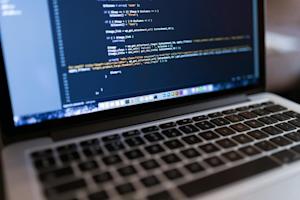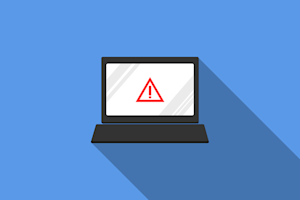As remote work continues to become a permanent fixture in the modern workplace, ensuring the security of digital workspaces has never been more critical. With the rise of remote work comes a corresponding increase in cyber threats, making it essential for businesses to adopt secure remote work practices.
A secure remote work environment protects not only company data but also the personal information of employees, helping to maintain trust and compliance with regulatory standards.
In this blog, we'll explore the importance of secure remote work, the risks involved, and best practices to protect your digital workspace effectively.
What is Secure Remote Working?
Secure remote working is the practice of performing work tasks from a location outside the traditional office while ensuring that all digital activities are safeguarded against potential cyber threats. In essence, secure remote working aims to replicate the level of security found in a traditional office environment, regardless of where employees are physically located.
Secure remote working aims to enable employees to work productively and safely from any location—whether it's from home, a co-working space, or while traveling—without compromising the integrity of corporate data and systems. This approach requires robust technological solutions and a strong focus on cybersecurity awareness and best practices among employees.
Why Is Secure Remote Working Important?
In today's increasingly digital world, secure remote working is vital for several reasons. First and foremost, it protects sensitive business information from cyber threats. As remote work environments often extend beyond the secure confines of a corporate office, they become more vulnerable to cyberattacks such as phishing, malware, and unauthorized access. By prioritizing secure remote work practices, businesses can significantly reduce the risk of data breaches and ensure that their confidential information remains protected.
Additionally, secure remote working is crucial for maintaining compliance with industry regulations and data protection laws. Many industries, such as healthcare, finance, and legal services, have strict requirements regarding the handling and storage of sensitive data. Failure to comply with these regulations can result in severe penalties, legal repercussions, and damage to the organization's reputation. Implementing secure remote work protocols helps businesses meet these regulatory demands, even when employees are working from disparate locations.
Finally, secure remote working enhances business continuity. In the event of unforeseen circumstances—such as natural disasters, pandemics, or other disruptions—having a secure remote work infrastructure in place allows businesses to continue operations without significant downtime. This resilience not only protects the company's bottom line but also ensures that employees can maintain productivity no matter where they are working from.
What Are the Security Risks Associated with Remote Work?
While remote work offers numerous benefits, it also introduces a range of security risks that can jeopardize the safety of sensitive information and the integrity of business operations. Some of the most common security risks associated with remote work include:
Phishing Attacks: Phishing remains one of the most prevalent cyber threats, and remote workers are particularly vulnerable. Attackers often use deceptive emails or messages to trick employees into revealing confidential information, such as login credentials or financial data.
Unsecured Wi-Fi Networks: Working from public or home networks, which may lack adequate security measures, exposes remote workers to potential cyberattacks. Unsecured Wi-Fi networks are prime targets for hackers looking to intercept data, launch man-in-the-middle attacks, or gain unauthorized access to corporate systems.
Inadequate Endpoint Security: Remote work often involves using personal devices such as laptops, tablets, and smartphones to access company networks. These devices may not have the same level of security as those managed within a corporate environment, increasing the risk of malware infections, data breaches, and unauthorized access.
Weak Passwords and Authentication: The use of weak or reused passwords is a significant security risk in any environment, but it is particularly concerning in remote work scenarios. Without the protection of enterprise-level security tools, weak passwords can easily be exploited by attackers to gain access to sensitive systems and data.
Data Leakage and Loss: With employees working from various locations, the potential for data leakage or loss increases. This can occur through accidental sharing of sensitive information via unsecured channels, the use of unsanctioned cloud storage services, or even the physical theft of devices containing critical data.
Lack of Physical Security: In a traditional office setting, physical security measures help protect sensitive information. However, remote work environments may lack these controls, making it easier for unauthorized individuals to access confidential data. This is particularly concerning for employees who work from shared spaces or public areas where others can easily view their screens or documents.
Insufficient Backup and Recovery Solutions: Remote workers may not have access to the same robust backup and recovery solutions as they would in an office environment. This lack of backup can lead to data loss in the event of a cyberattack, hardware failure, or accidental deletion, potentially causing significant disruptions to business operations.
Unsecured Direct Access to Cloud and SaaS Apps: Remote employees often access cloud and SaaS platforms without proper security controls, increasing the risk of unauthorized access. Weak authentication and lack of access management can expose sensitive data to cyber threats. Implementing SSO, MFA, and strict access controls helps mitigate these risks.
Addressing these security risks is essential for maintaining the integrity of remote work environments and ensuring that sensitive data remains protected. By understanding and mitigating these threats, businesses can create a safer and more secure remote work experience for their employees.
Key Challenges in Maintaining Security in a Remote Work Environment
Maintaining security in a remote work environment poses several challenges that businesses must address to protect their digital assets and ensure the safety of their operations. These challenges are often compounded by the dispersed nature of remote work, where employees operate from various locations and on different devices. Here are some of the key challenges:
1. Diverse and Unsecured Devices
Remote workers often use a mix of company-issued and personal devices to perform their tasks. These devices may not have uniform security configurations, making them more vulnerable to cyber threats. Personal devices, in particular, might lack essential security features such as firewalls, antivirus software, or regular updates, increasing the risk of malware infections and unauthorized access.
2. Inconsistent Security Policies
Enforcing consistent security policies across a remote workforce can be difficult. Employees working from different locations and using various devices may not always adhere to the same security protocols. This inconsistency can lead to vulnerabilities, such as the use of weak passwords, unsecured file sharing, and the failure to update software regularly.
3. Lack of IT Oversight
In a traditional office setting, IT teams have direct control over the network, devices, and security protocols. However, in a remote work environment, IT teams have limited visibility and control over the devices and networks employees use. This lack of oversight makes it challenging to detect and respond to security incidents promptly.
4. Human Error
Human error remains one of the most significant security risks in any environment, and remote work is no exception. Employees may inadvertently click on phishing links, download malicious attachments, or use unsecured methods to share sensitive information. The absence of in-person training and immediate IT support can exacerbate these risks, leading to potential security breaches.
5. Lack of Secure Access to Corporate Resources
Providing secure access to corporate resources, such as databases, applications, and files, is critical in a remote work environment. However, ensuring this access is seamless and secure can be challenging. Without proper access controls and encryption, sensitive data can be exposed to unauthorized individuals, either through hacking or accidental sharing.
6. Managing Third-Party Tools and Services
Remote work often requires the use of third-party tools and services, such as video conferencing software, cloud storage, and collaboration platforms. While these tools are essential for productivity, they can introduce additional security risks if not properly vetted and secured. Ensuring that these services comply with the organization's security standards is a complex and ongoing challenge.
7. Data Privacy and Compliance
Many industries are subject to strict data privacy and compliance regulations, such as GDPR, HIPAA, and CCPA. Maintaining compliance in a remote work environment can be difficult, as employees may inadvertently mishandle sensitive data or use non-compliant tools. Ensuring that remote work practices align with regulatory requirements is essential to avoid legal repercussions and protect the organization’s reputation.
8. Secure Collaboration
Collaboration is key to productivity in remote work, but it can also be a security risk. Employees may use unsecured communication channels or file-sharing methods, leading to potential data leaks or unauthorized access. Implementing secure collaboration tools and practices is crucial to maintaining both efficiency and security.
Addressing these challenges requires a comprehensive approach that combines robust technology solutions with clear policies and employee training. By understanding and proactively managing these challenges, businesses can create a secure remote work environment that supports productivity while protecting sensitive information.
Best Practices for Secure Remote Work
Ensuring a secure remote work environment requires a combination of technological solutions, employee training, and consistent enforcement of security policies. By following best practices, organizations can minimize the risk of cyber threats and maintain the integrity of their operations. Here are some of the most effective best practices for secure remote work:
1. Implement Strong Password Policies
Enforcing the use of strong, unique passwords is a fundamental security measure. Employees should be required to create passwords that are long, complex, and contain a mix of letters, numbers, and symbols. Additionally, passwords should be changed regularly, and password reuse across different accounts should be strictly prohibited. Using a password manager can help employees manage and generate secure passwords.
2. Enable Multi-Factor Authentication (MFA)
MFA adds an additional layer of security by requiring users to provide two or more verification factors before accessing company resources. This could include a combination of something they know (password), something they have (a mobile device), or something they are (fingerprint). MFA significantly reduces the risk of unauthorized access, even if login credentials are compromised.
3. Regularly Update and Patch Software
The risk of unpatched software is significant. Keeping all software, including operating systems, applications, and security tools, up to date is crucial for protecting against vulnerabilities. Regular updates and patches address security flaws that could be exploited by cybercriminals. Organizations should leverage patch management software to keep all assets protected.
4. Use Secure Remote Access Software
Secure remote access software is essential for protecting data transmitted between remote workers and the corporate network. This software provides encrypted connections, making it more difficult for attackers to intercept or access sensitive information. Employees should be required to use secure remote access tools, like Splashtop, when accessing company resources from outside the office to ensure that all data remains protected and secure.
5. Educate Employees on Security Awareness
Regular security training is vital for empowering employees to recognize and respond to potential threats. Training should cover topics such as identifying phishing attempts, secure password practices, safe browsing habits, and proper data handling procedures. Keeping employees informed about the latest security threats and best practices is key to maintaining a secure remote work environment.
6. Use Secure Communication Tools
Remote work often involves frequent communication and collaboration, which should always be conducted through secure, encrypted channels. Organizations should provide and mandate the use of secure communication tools, such as encrypted messaging apps, secure video conferencing platforms, and protected email services. This helps prevent unauthorized access to communications and data.
7. Implement Endpoint Security Measures
Endpoint security is critical in a remote work setup, where employees may use various devices to access company resources. Installing and maintaining endpoint protection software, such as antivirus programs, firewalls, and intrusion detection systems, helps safeguard these devices against malware and other cyber threats. Additionally, devices should be regularly scanned for vulnerabilities.
8. Set Up Access Controls
Access controls are essential for limiting who can view or interact with sensitive information. Implement role-based access controls (RBAC) to ensure that employees can only access the data and systems necessary for their roles. Regularly review and update these permissions to account for changes in roles or responsibilities within the organization.
9 Regularly Back Up Data
Regular data backups are a critical safeguard against data loss due to cyberattacks, hardware failures, or human error. Implement a robust backup strategy that includes regular, automated backups of all critical data. Backups should be stored securely, both on-site and off-site, to ensure that data can be quickly restored in the event of a disaster.
10. Monitor and Respond to Security Incidents
Continuous monitoring of network activity and user behavior helps detect and respond to security incidents in real-time. Organizations should implement monitoring tools and establish an incident response plan to quickly address any security breaches. This proactive approach can minimize the impact of cyber threats and help maintain the security of remote work operations.
11. Establish Clear Remote Work Policies
Clear and comprehensive remote work policies provide employees with guidelines on how to work securely from any location. These policies should cover all aspects of remote work, including acceptable use of company resources, secure communication practices, and procedures for reporting security incidents. Ensuring that employees understand and adhere to these policies is critical for maintaining security.
12. Migrate Your Business Applications to the Cloud
Shifting to cloud-based applications improves security and accessibility while reducing reliance on local infrastructure. Cloud platforms offer built-in security features like encryption, access controls, and automatic updates, helping businesses maintain a secure remote work environment.
13. Implement BYOD/MDM Policies
Allowing employees to use personal devices for work introduces security risks. A Bring Your Own Device (BYOD) policy combined with Mobile Device Management (MDM) ensures that all devices accessing company resources meet security requirements, such as encryption, remote wipe capabilities, and compliance monitoring.
14. Use Password Managers
Weak or reused passwords are a leading cause of data breaches. A password manager helps employees generate and store strong, unique passwords securely, reducing the risk of credential theft.
15. Use Caution with Wireless Networks
Public and unsecured Wi-Fi networks expose remote workers to potential cyber threats like man-in-the-middle attacks. Solutions like Foxpass ensure proper authentication for network access.
By following these best practices, organizations can create a secure remote work environment that protects their digital assets and supports productive, efficient work. Combining strong security measures with employee education and clear policies is essential for minimizing risks and ensuring the long-term success of remote work initiatives.
Top Tools for a Secure and Productive Remote Workforce
To maintain security and efficiency in a remote work environment, businesses need the right tools to protect sensitive data while enabling seamless collaboration and access. Key solutions include:
Secure Remote Access Software – A robust remote access solution allows employees to work from anywhere without compromising security. Look for software with encryption, multi-factor authentication (MFA), and granular access controls. Splashtop offers enterprise-grade security, fast connections, and cross-platform compatibility, making it a reliable choice for remote teams.
Endpoint Security and Threat Protection – Antivirus, endpoint detection and response (EDR), and intrusion prevention tools help safeguard devices from cyber threats, reducing the risk of malware and unauthorized access.
Cloud-Based Collaboration Tools – Secure file-sharing and communication platforms ensure teams can collaborate effectively while keeping data protected. Features like access permissions and encryption enhance security.
Identity and Access Management (IAM) Solutions – Implementing IAM tools with single sign-on (SSO) and MFA strengthens authentication security, preventing unauthorized logins.
By integrating these solutions, businesses can create a secure and efficient remote work environment while minimizing security risks.
How Splashtop Ensures Secure Remote Working
Splashtop is designed with security at its core, providing businesses and individuals with a robust remote access solution that ensures the safety of their digital workspaces. By implementing advanced security measures and adhering to industry best practices, Splashtop offers a secure and reliable platform for remote work. Here’s how Splashtop ensures secure remote working:
End-to-End Encryption: Splashtop uses end-to-end encryption to protect all data transmitted between remote devices and corporate networks. This means that data is encrypted before it leaves the remote device and remains encrypted until it reaches its destination, making it unreadable to anyone who might intercept it.
Multi-Factor Authentication (MFA): Splashtop supports multi-factor authentication, adding an extra layer of security to user logins. This significantly reduces the risk of unauthorized access, even if login credentials are compromised.
Device Authentication and Access Control: Splashtop allows organizations to manage and control which devices are permitted to access their network. By requiring device authentication, Splashtop ensures that only authorized devices can connect, reducing the risk of unauthorized access.
Regular Security Audits and Updates: Splashtop is committed to maintaining the highest security standards by regularly conducting security audits and updates. This proactive approach helps protect users against the latest cyber threats and ensures the platform remains secure.
Granular User Permissions: Splashtop allows administrators to set granular user permissions, allowing them to control who has access to specific resources and what actions they can perform. This includes the ability to restrict access to certain files, applications, or systems, ensuring that employees can only access the information necessary for their roles.
Secure Infrastructure and Data Centers: Splashtop’s infrastructure is hosted on secure data centers that comply with industry standards for physical and network security. These data centers are equipped with advanced security features, including firewalls, intrusion detection systems, and 24/7 monitoring, to protect against unauthorized access and other threats.
Strong Endpoint Protection: Splashtop enhances endpoint security by providing features that protect both the remote device and the corporate network. This includes tools like remote wipe, which allows administrators to remotely erase data from a device in case it is lost or stolen. Additionally, Splashtop integrates with existing antivirus and firewall solutions to provide comprehensive protection against malware and other threats.
Compliance with Industry Standards: Splashtop is compliant with various industry standards and regulations, including GDPR, HIPAA, SOC 2, and more. This ensures that businesses in regulated industries can use Splashtop with confidence, knowing that their data and remote work activities meet the necessary compliance requirements.
By leveraging these advanced security features and practices, Splashtop ensures that businesses and individuals can enjoy a secure and seamless remote work experience.
Get Started with Splashtop: Leading Secure Remote Work Solution for Modern Businesses
In today's digital landscape, ensuring the security of your remote work environment is not just a necessity—it's a critical component of your business’s success. With the increasing prevalence of cyber threats targeting remote workers, choosing a reliable and secure remote access solution is essential. Splashtop stands out as the leading choice for businesses looking to protect their digital workspaces while enabling seamless, productive remote work.
Ready to take the next step in securing your remote work operations? Start your free trial of Splashtop today and experience the difference that a secure, high-performance remote access solution can make for your business. Protect your digital workspace, enhance your productivity, and join the thousands of businesses worldwide that trust Splashtop for their remote work needs.





